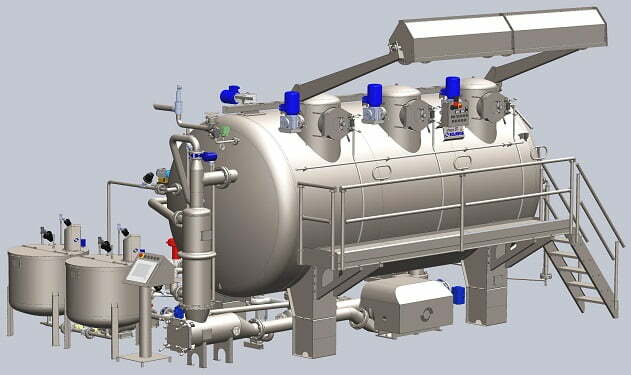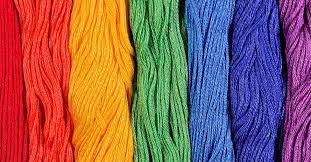The general theory of dyeing explains the interaction between dye, fibre, water and dye auxiliary. Dyeing process is essentially a distribution process. The dye is distributed over at least two phase systems, the dye bath & textile materials. The dyeing process consists of basic four stages which are:
- Migration of the dye from the solution to the interface accompanied by adsorption on the surface of the fibre
- Diffusion of the dye from the surface towards the centre of the fibre.
- The anchoring of the dye molecules by covalent or hydrogen bonds, or other forces of a physical nature.
- Washing off the excess dyes and chemicals.
Stage 1: Adsorption of dyes from the solution to the surface of the fibre
Most of the dyes in solution are either in molecular & partially ionised state or exist in the form of ionic micelles. Increased temperature tends to break down micelles into less aggregated units.
The dye molecules from the dye bath are adsorbed on the fibre surface and make a layer around the fibre surface. Dye adsorption has an effect on fastness properties and penetration of the dye into the fibre. Adsorption may be either temporary or permanent. The transfer of dye into the fibre structure depends on-
- Environment of the dye bath: solvents and its type, nature, quality, temperature and pH of the dye bath, dyeing assistants etc.
- Substantivity of the dyes
- Physical/mechanical forces
Stage 2: Diffusion
Diffusion means penetration/movement of the dyes from surface towards the centre of the fibre. Diffusion is very important because it affect fastness properties and production of dyed materials. Diffusion depends on-
- Dye size and nature of fibres and dyes
- Structure of the fibre (crystalline or amorphous)
- Force of attraction
- Environment –pH, solvent, temperature etc.
Stage 3: Anchoring of or Interaction between dyes and fibres
The diffused dyes entrapped or create bond with substrate to ensure wet fastness. Dye-fibre interaction maybe of mainly two types-
- Ionic ((+ve)(-ve), (-ve)(+ve))
- Non-ionic (hydrogen bond, van der waals force, covalent bond etc.).
Stage 4: Washing off
After the dyeing process, dyed materials must be washed to remove the unfixed dyestuff and chemicals from the dyed fabrics or yarn. It is a must process to ensure the best dyeing performance like good colourfastness properties, uniform dyeing or level dyeing etc.
Texpedi.com
Check out these related articles:







